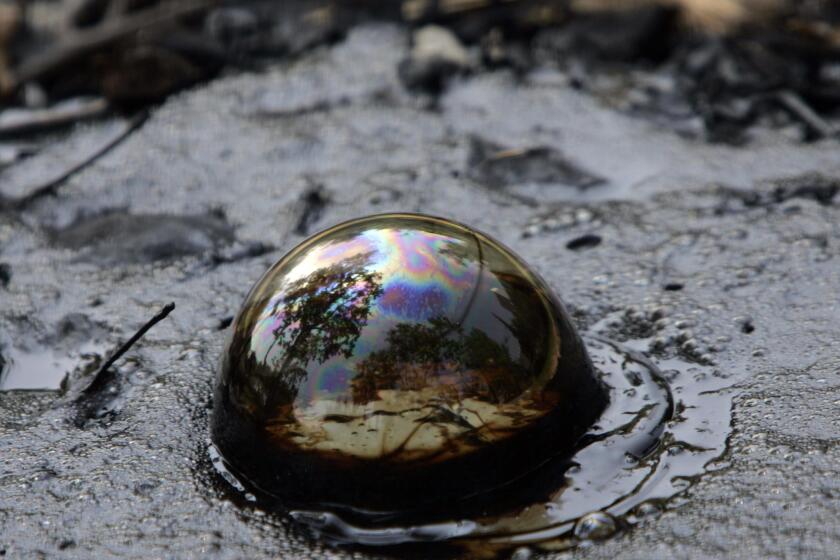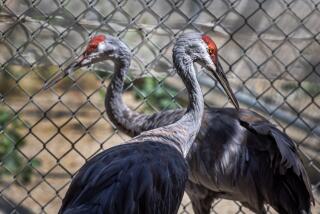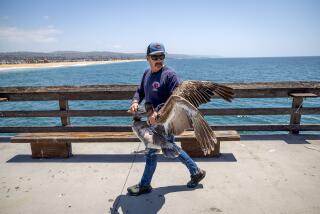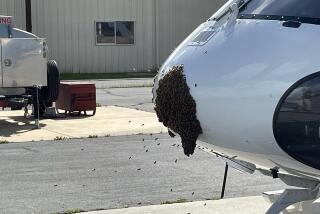After flock of 15 Canada geese landed in the La Brea Tar Pits, just two survive

- Share via
Two Canada geese, the only survivors of a flock of about 15 that landed in the La Brea Tar Pits in late July, are recovering from serious burns.
The geese, one of the local urban flocks, mistakenly touched down on the Los Angeles Natural History Museums’ famed sticky asphalt on July 31. Seven birds were initially rescued and taken to the Los Angeles Wildlife Center in San Pedro for treatment from injuries caused by the heated tar, according to the nonprofit International Bird Rescue, but five of those later died.
“Initially, we were thinking that they all might die,” said Rebecca Duerr, director of research and veterinary science at the International Bird Rescue.
The two survivors are recovering from exhaustion, burns and feather loss, officials said.
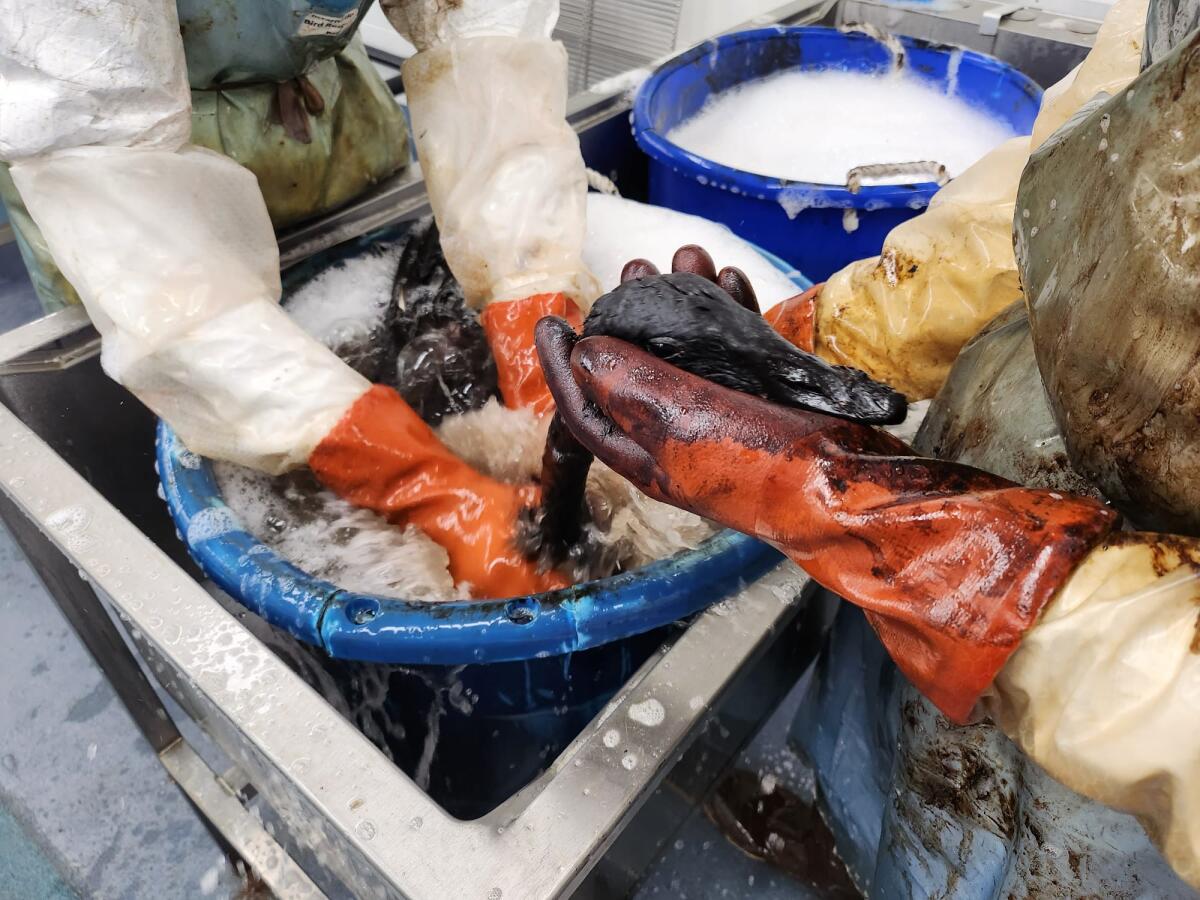
An animal control officer noticed the trapped flock of distressed geese on the evening of July 31.
“They are quite sizable, and if they run into trouble like this, people spot them,” Duerr said. “If this was a flock of really small birds, probably nobody would have noticed.”
Rescuers found the birds “listless and unable to stand” in the pits, she said, adding that they were covered in tar and nearly unrecognizable.
“Imagine a large bird encased in a gooey black mess — it’s a little hard to tell where the bird stops,” Duerr said.
The museum contacted Los Angeles Animal Services to rescue the birds. Separating the geese from the pit was challenging, said JD Bergeron, chief executive of International Bird Rescue.
“I’m sure that had something to do with the stickiness,” he said. “But also wild animals don’t want to be caught by humans. They see us as monsters, and that’s good and healthy — they should naturally be trying to avoid us.”
But the struggling did more harm than good.
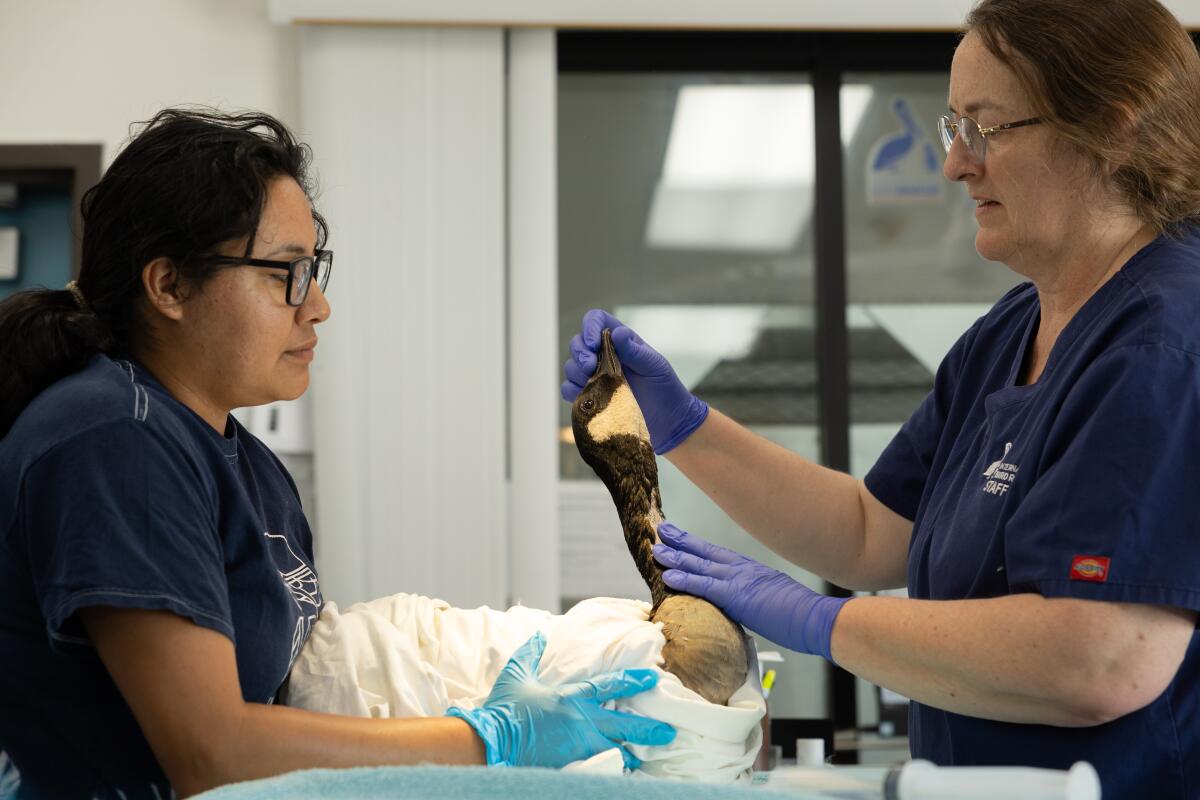
The rescued birds arrived “too stuck to themselves to move” and at risk of suffocation, officials said. Staff quickly began removing tar from the animals’ orifices to let them eat, breathe and defecate.
Veterinarians then realized the birds’ efforts to free themselves from the tar led to capture myopathy — muscle damage and atrophy caused by a stressed animal’s extreme struggling. Severely injured geese were euthanized, including one that broke its leg in the struggle and had its bone contaminated by oil.
The La Brea Tar Pits, recognized as a geological heritage site in 2022, attract nearly half a million visitors each year. The site in Hancock Park on Wilshire Boulevard holds one of the most complete fossil records of the late Quaternary period, which ended about 15,000 years ago.
The bubbling tar, or asphalt, has previously captured small mammals, birds and insects like “flies on flypaper,” according to the International Bird Rescue. Duerr worked at a rescue center in California about 20 years ago and said the center would occasionally receive animals that had been trapped in the pits. But the recent flock of geese was the largest incident she had seen in years.
The La Brea Tar Pits were recognized as one of the world’s First 100 IUGS Geological Heritage Sites for their stunning Ice Age fossil record.
The tar pits are fenced off, but nothing discourages birds from landing on the goo. Bergeron said the lake was created to mine asphalt “and still presents a great risk to wildlife.”
“While the pits have been made safe for people, clearly we haven’t done enough to protect wildlife around us,” he said.
A spokeswoman for the Natural History Museum of Los Angeles County said it is an “unfortunate and distressing situation.”
“This particular situation is a rare occurrence, but animals occasionally getting stuck in the tar is a process that has been happening here for over 60,000 years,” the museum said in an email statement.

One of the geese “graduated” to an outdoor enclosure similar to its habitat in the wild, Bergeron said. The other goose underwent surgery and is healing.
“Once the birds are in a safe place, they recover quite well,” he said. “So fingers crossed that these will both be released.”
Donations to the International Bird Rescue can be made at www.birdrescue.org/donate/.
More to Read
Sign up for Essential California
The most important California stories and recommendations in your inbox every morning.
You may occasionally receive promotional content from the Los Angeles Times.
